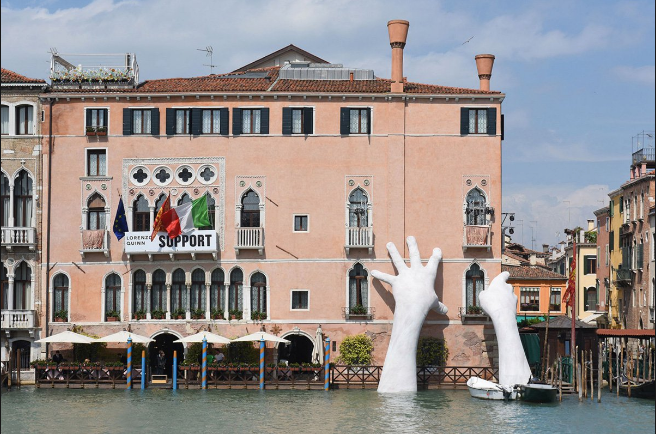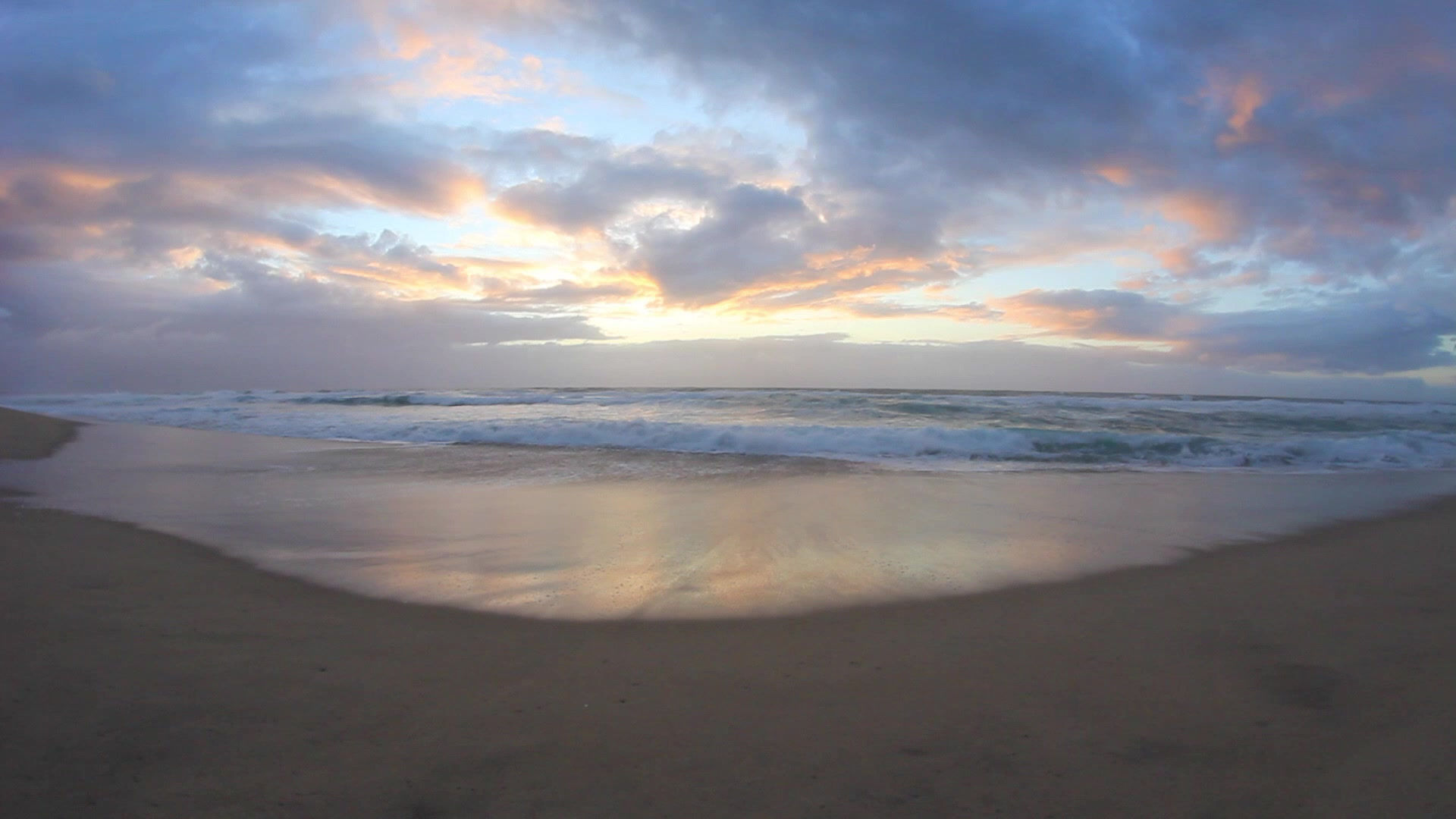View of the Ruins of Venice
- Michelle Wei
- Nov 9, 2018
- 5 min read
Updated: Jan 18, 2019
“Il y a deux choses dans un édifice : son usage et sa beauté. Son usage appartient au propriétaire, sa beauté à tout le monde, à vous, à moi, à nous tous. Donc, le détruire c’est dépasser son droit.” Victor Hugo

Nicknamed “La Serenissima”, Venice is known for its elaborate canals, extravagant masquerades, ornate architecture, and unfortunately mass tourism. The former serene city is overwhelmed with approximately 30 million tourists each year, all flocking to stand on the Bridge of Sighs, walk around Piazza San Marco, or ride in a gondola along the grand Canal. However, as more and more people travel to Venice to view the historic buildings and ruins, they inadvertently contribute to the ruination of Venice.
Recently, Italy was ravaged by storms and various cities throughout the country were flooded. Three quarters of Venice was submerged in water. The water level rose over five feet before receding (CBS News). Currently, many residents are worried about the flood damage to the historical buildings. Pierpaolo Campostrini, a member of the board responsible for managing St. Mark’s Basilica, explains that flooding causes a “splitting [in the marble facade of the Basilica] in the brick and plaster” (The New York Times). However, images depicting the flooding and post-flood damage clean up are contrasted with images of tourists frolicking in the water, dining, and taking selfies amidst the saltwater. Jason Horowitz of the New York Times reports that “Some of the tourists seemed to be having fun, picking up crabs that had washed onto the sides of the canals or laughing as they carried their luggage over their heads.” These tourists are amused by the situation they are in. However, they do not realize that this is an ongoing problem for citizens in Venice who worry about Venice sinking and losing their entire livelihoods to the water.

This is the modern Grand Tour. In the 18th century, a fascination with ruins created a phenomenon of wealthy young men who wanted to build themselves into well rounded individuals that witnessed other cultures and the remnants of other civilizations. They visited ruins to become better versions themselves, but the Grand Tour ended up becoming an industry. Paintings were sold to people traveling and the trip became a symbol of wealth and how cultured one was (Steintrager). In the modern times, that translates into a bucket list. Today, millions of people travel to Venice to cross off St. Mark’s Basilica, Piazza San Marco, and the Grand Canal. Cruise ships dock in the center of the city and another couple thousand people flood in with their tourist books and selfie sticks. Mass tourism is destroying Venice’s beauty. Venetians say to enjoy Venice is to get lost in it, not to stare at your cell phone’s GPS and follow one straight path to your destination.
In the 1980s, the number of Venetians living in Venice was about 120,000. In the fifties, that number was around 170,000. Today, there are approximately 55,000 residents living in the city. This dwindling number is can be explained for by a number of reasons:
The decrease of viable jobs that are not related to tourism (Wander Wisdom)
The increase in the number of homes becoming Airbnbs for tourists or vacation homes for the wealthy (Independent)
The increase in shops and stores converting from specialized dressmakers, shoemakers, and barbers into stores selling gaudy tourist gifts (Wander Wisdom)
The increase in restaurants selling overpriced foods (BBC)
This is where the line between the advantages and disadvantages of tourism comes in. Venice has taken advantage of its historic buildings and canals to market Venice as a cultural mecca; however, its result has transformed Venice into another Disneyland: overcrowded and overpriced. In fact, UNESCO is considering removing its designation of Venice as a world heritage site because “mass tourism is threatening the sustainability of the site” (New York Times) .

Put up in 2017, Lorenzo Quinn’s Support is an art installation that is meant to show the power of humans to create and destroy beauty. The giant hands rise from the canal to support and protect the historic Ca’ Sagredo Hotel in Venice. The hands show a gesture “both gallant in appearing to hold up the building whilst also creating a sense of fear in highlighting the fragility of the building surrounded by water and the ebbing tide” (Support At Venice). Connecting to humanities core, Joseph Gandy’s “Bird’s Eye View of the Bank of England” depicts a painting of the bank in ruins but at the time, the Bank was not even finished being built yet. I believe that this is Gandy’s warning to what humans can do. We are able to build such a beautiful buildings, but if we do not take care of that beauty, it will inevitably fall to ruins.
Venice is fragile. It sinks into the water a little bit each year, but tourists oblivious to what they do when they ride in on giant cruise ships, continue to ravage Venice by littering, picnicking on statues, or scribbling their names on monuments. The beauty of Venice will become lost if we are not careful. The question is how can we protect the beauty of Venice while sharing it with the world? How can cities preserve the historical monuments, buildings, and artifacts that millions of people are vying to get a glimpse of when those same people ignorantly disrespect the city and trash its home.
Works Cited
“About Support By Lorenzo Quinn.” Support by Lorenzo Quinn, Halcyon Gallery, www.supportatvenice.com/. Accessed 8 Nov. 2018.
CBS/AP. “Three-Quarters of Venice Underwater as City Hit by Worst Flooding in a Decade.” CBS News, CBS Interactive, 30 Oct. 2018, www.cbsnews.com/news/venice-italy-underwater-as-city-hit-by-worst-flooding-in-a-decade/. Accessed 8 Nov. 2018.
Eaglescliffe, Beth. “Venice, Italy, Is Being Destroyed by Tourism and Flooding.” WanderWisdom, WanderWisdom, 1 Nov. 2018, wanderwisdom.com/travel-destinations/Venice-Tourism-Sinking. Accessed 8 Nov. 2018.
Gandy, Joseph. Bird's Eye View of the Bank of England . 1830, Sir Joane's Museum, London.
Horowitz, Jason. “In Venice Floods, Tourists Frolic as Locals Fear for Treasures.” The New York Times, The New York Times, 1 Nov. 2018, www.nytimes.com/2018/11/01/world/europe/venice-flooding-tourists-tourism.html?rref=collection%2Fspotlightcollection%2Fdispatches-international. Accessed 8 Nov. 2018.
Hugo, Victor. “Guerre aux démolisseurs” Revue des Deux Mondes, période initiale, tome 5, 1832, pp. 221.
News, BBC, director. Is Tourism Killing Venice? - BBC News. Is Tourism Killing Venice? - BBC News, YouTube, 15 Oct. 2018, www.youtube.com/watch?v=adBnsXD0_bw. Accessed 8 Nov. 2018.
Pollard, Lawrence. “Will Venice Be Loved to Death?” BBC News, BBC, 20 Nov. 2016, www.bbc.com/news/world-europe-38027025. Accessed 8 Nov. 2018.
Ross, Winston. “The Death of Venice: Corrupt Officials, Mass Tourism and Soaring.” The Independent, Independent Digital News and Media, 15 May 2015, www.independent.co.uk/news/world/europe/the-death-of-venice-corrupt-officials-mass-tourism-and-soaring-property-prices-have-stifled-life-in-10251434.html. Accessed 8 Nov. 2018.
Steintrager, James. "Empire and Its Ruins." Humanities Core. 5 November 2018, BS3, University of California Irvine, Irvine, CA. Lecture.
“Venice Restaurant Bill Outrages Japanese Tourists.” BBC News, BBC, 22 Jan. 2018, www.bbc.com/news/world-europe-42772609. Accessed 8 Nov. 2018.


















Comments